9 Sourdough Secrets People Don’t Tell You
If you are new to sourdough or have been frustrated by it, you might like to learn about these 9 sourdough secrets and myths.
In this article, I am sharing my top 9 sourdough secrets and myths that might keep you from enjoying sourdough and baking better breads.
Some of what I am going to tell you might go against established sourdough grain (so to speak) and be a bit controversial.
But this is a summary of my 40 years or so of keeping sourdough starters and baking sourdough breads.
This post contains affiliate links, which means I make a small commission at no extra cost to you. You can read my full disclosure.
Sourdough Secret #1
Heirloom, San Francisco, or 150-year-old sourdough starters
I am not trying to diminish the value of a very old sourdough starter. On the contrary, I find it pretty impressive that people have been keeping continuous sourdough starters. Once active, ripe, and established they can be great for anyone new to sourdough.
However, did you know that after about 4 feedings (if you do the discard and feed method) or 4 bread bakings, that sourdough starter has nothing to do with the original one you got? You see, once you feed it with your flour, keep it in your kitchen, and environment, the microbial content has changed completely.
By all means, get an established sourdough starter if you like. But just know that it will quickly have nothing to do with the original one.
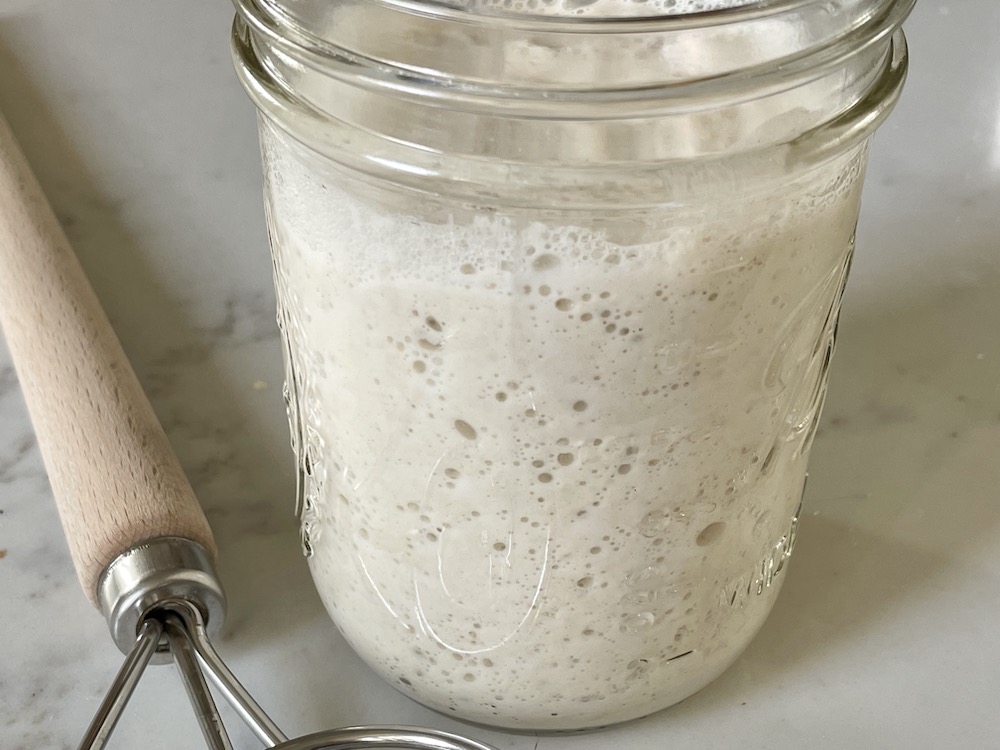
Sourdough Secret #2
Your first sourdough starter is often the hardest to make
I find it interesting that making your very first sourdough starter can be the most challenging to make. That is one of the reasons, people give up on sourdough.
If you are completely new to baking with sourdough, you may not have any wild yeasts in your kitchen. Therefore, when I teach people how to make a sourdough starter from scratch, I always tell them to not give up. Even though my sourdough method is really easy, it might still take longer to get a starter going if you have never baked with sourdough in your kitchen. Since young starters are the most vulnerable, I wrote a whole article on why you might have mold on your sourdough starter.
Sourdough Secret #3
Rye flour is best for your sourdough starter
Whether you’re trying to make a sourdough starter from scratch or activate a sluggish starter, rye flour is your best friend. I always say rye is like ‘steroids’ for your sourdough. It is higher in enzymes and holds on to water more than wheat (you can learn more about rye and sourdough here).
My favorite rye flours are Central Millings Dark Rye Flour and King Arthur Baking Medium Rye Flour.

Sourdough Secret #4
You do not NEED to discard any of your sourdough starter
If you have a sourdough discard and feed routine that works great for you, you might want to skip this section.
If on the other hand, you find discarding wasteful, keep reading. There actually is another method that does not require you to discard any of your precious sourdough starter. You can learn all about my very popular no discards sourdough method here.
Sourdough Secret #5
You do not need to be a slave to your sourdough starter
Just the way you do not have to discard any of your sourdough starter, you also do not have to do regular feedings to keep it going. Don’t get me wrong, there are times when certain feedings will help to improve the activity of your starter. But as I am demonstrating in my signature sourdough method, you can use your sourdough starter on YOUR schedule. Whether that means baking once a week or once a month.
Sourdough Secret #6
There is a learning curve with sourdough
Think about how previous generations learned about sourdough baking: their mothers would teach them right there in their kitchens. They would show them what their doughs should look and feel like. In the absence of that, we have to rely on measurements and exact recipes.
But there are so many variables in sourdough baking: your flour, how fine your flour has been milled, the ambient wild yeasts in your kitchen, your water, the temperature, and humidity.
Therefore, I always tell people to never give up. Try again if it didn’t turn out the way you wanted it. Allow yourself to develop a feel for your sourdough.
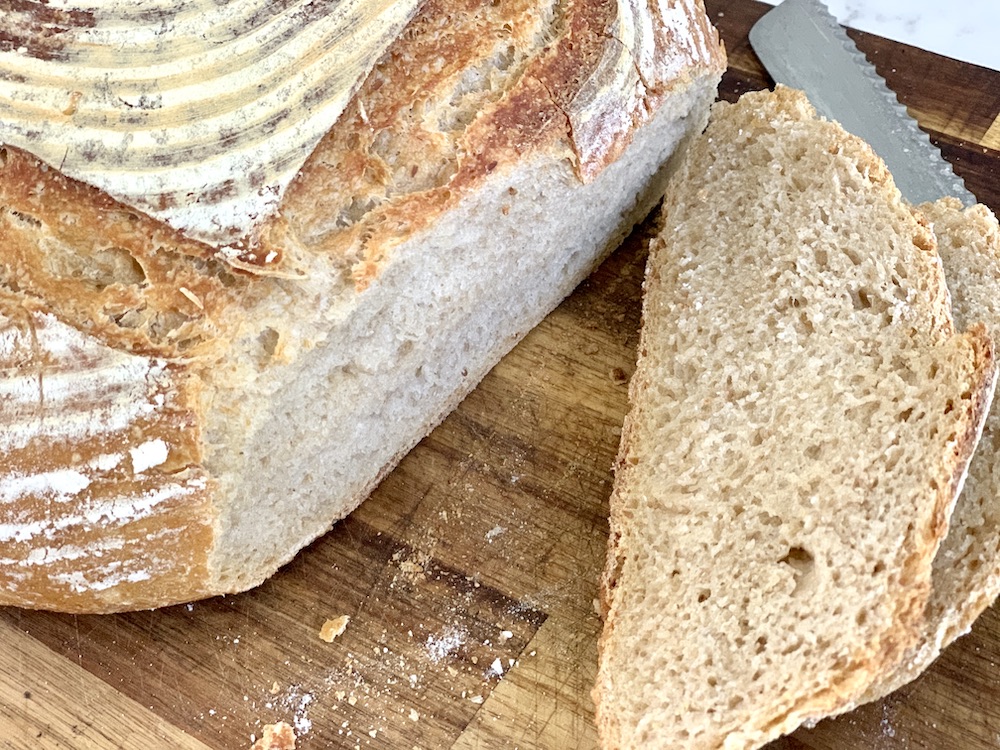
Sourdough Secret #7
Big holes and an open crumb in your bread may be overrated
I get. Reading, learning, and upgrading my knowledge about sourdough is what I do. I also spend some time in Facebook groups and I am on Instagram where I see lots and lots of photos of beautiful sourdough breads.
But who says that a bread with a tighter crumb isn’t good or edible? And did you know that bakeries in my native Germany never bake breads like that? For a nation that often eats bread 3 times a day, big holes in their slices of bread would be highly impractical. You see, they like to spread butter on their open-faced sandwiches and the butter would just disappear in those holes.
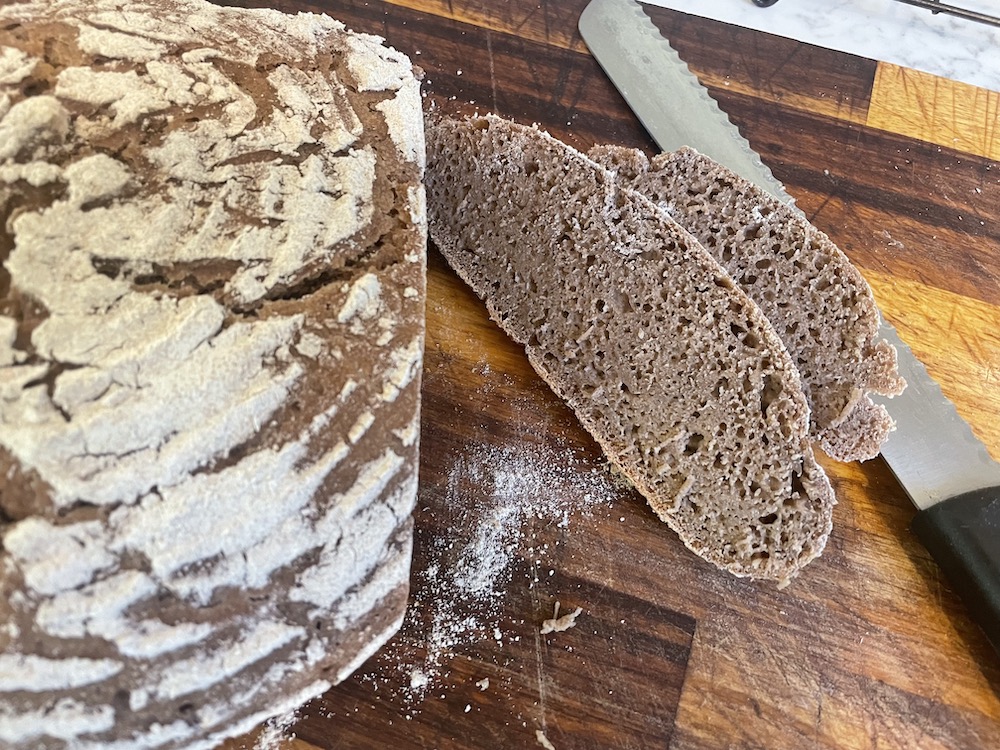
Sourdough Secret #8
Making the Perfect Loaf of bread is overrated
Back to those online sourdough groups. There, I see these pictures of the “Perfect Loaf” (I did borrow that term from a really good book) with big holes and an open crumb.
As I said before that may or not be desirable depending on how you want to use your bread and even where you live.
I also think that there may be unnecessary pressure to create a certain kind of bread. I do recommend you find an easy, beginner-friendly sourdough bread recipe and try to master that. Once you feel comfortable with it, you can branch out to other recipes.
Also, who determines what a “failed” loaf of bread is? If you like the taste, I think it’s a success. If it’s too dense, just make croutons, breadcrumbs, bread pudding, or other creative recipes with it.
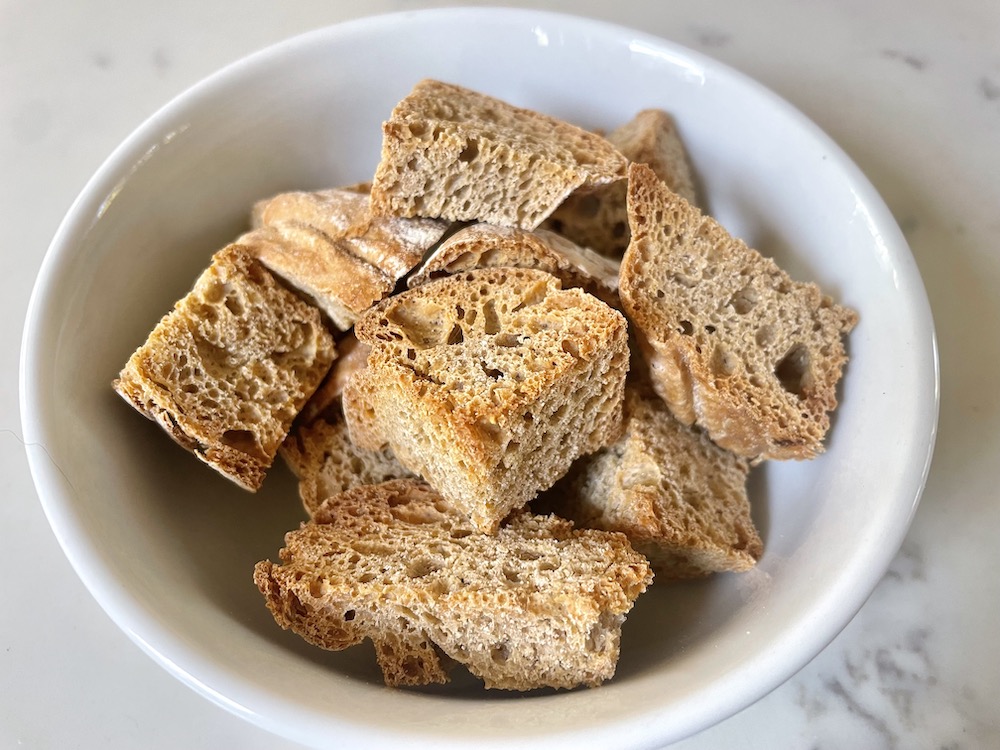
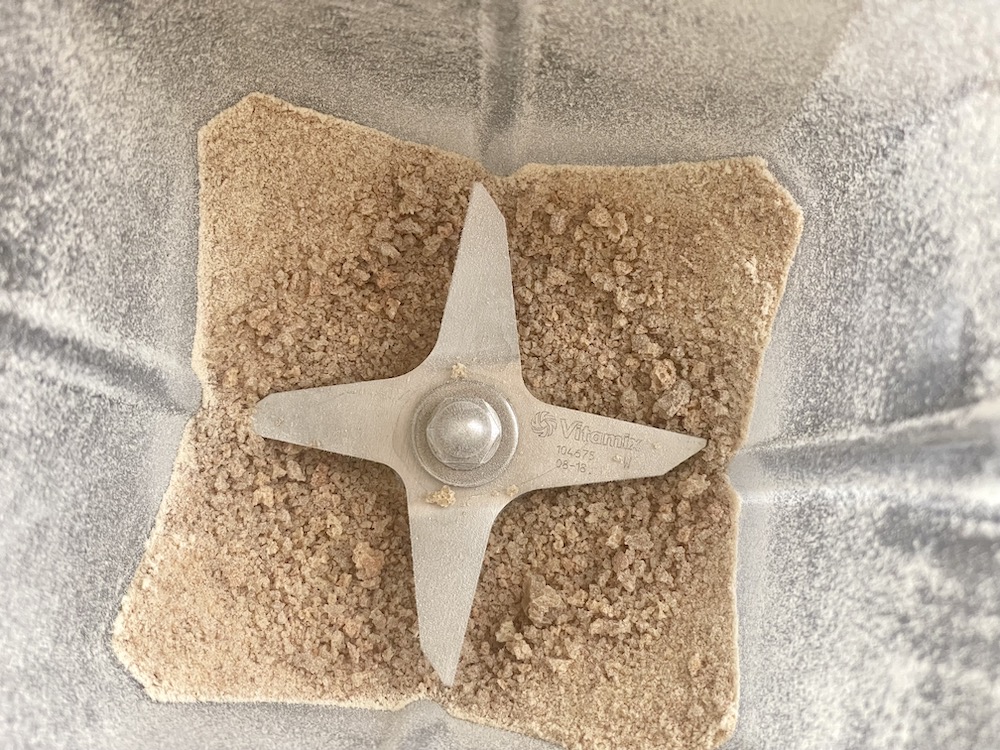
Sourdough Secret #9
You can add a pinch of yeast to your sourdough bread
I know, I know. Sourdough purists might scream that it wouldn’t be a true sourdough bread if you add commercial yeast to it.
Here’s the way I see it: yeasts are part of the microbial make-up of your sourdough starter. And the first commercial baker’s yeast products where made from sourdough. Granted, these days baker’s yeast is made in a lab.
But sometimes, a pinch of instant yeast can give you that feeling of success. It can be the difference between a very dense bread and a bread that you actually enjoy. You can always make your next bread a true 100% sourdough bread!
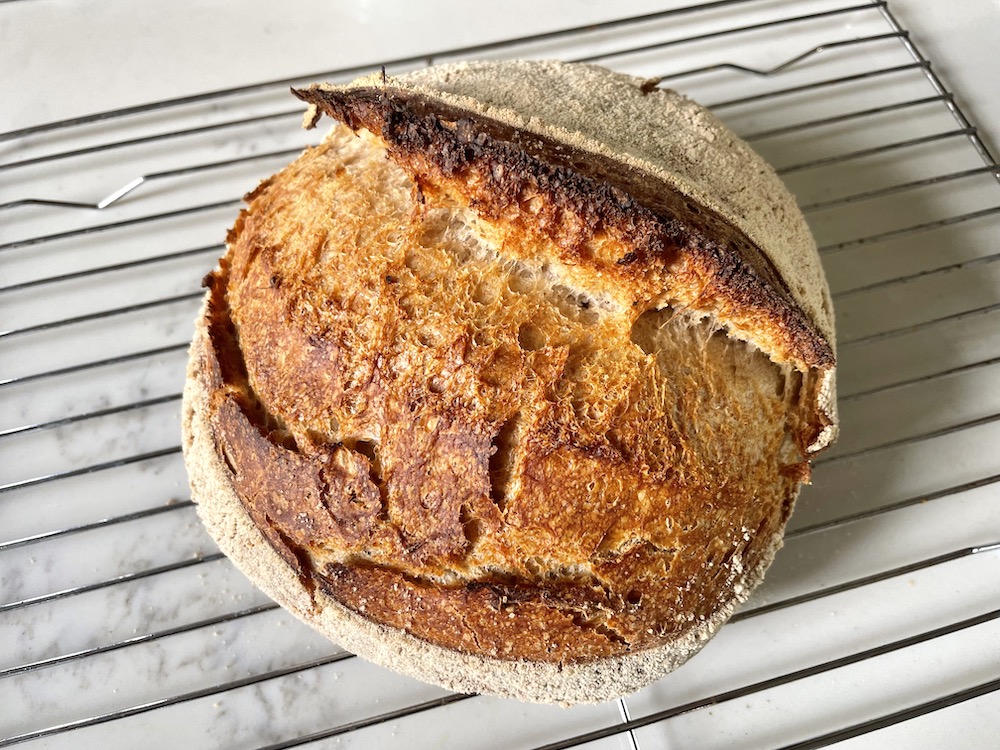
Conclusion
I hope that with this post I could inspire you to experiment more. Be less intimidated to “fail”. Book those denser breads under valuable “learning experiences”. Allow yourself to develop a feel for your sourdough starter.
If you need more help and inspiration, I recommend that you check out my Super Simple Sourdough online course. There I can give you a lot more personalized help, too.
Watch the video:
More sourdough articles you might enjoy:
Maintain Your Sourdough Starter
How to Make Your Sourdough Less (or More) Sour
How to Dehydrate Your Sourdough Starter
German Whole-Grain Sourdough Bread
Easy Way To Convert Recipes To Sourdough
Questions or Comments? Let me know below!
Pin For Later:
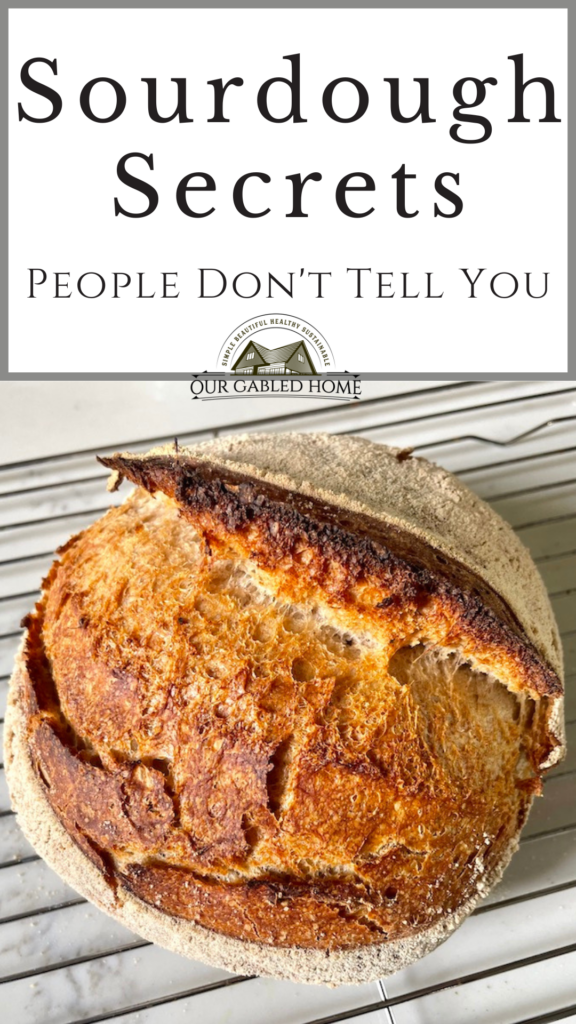
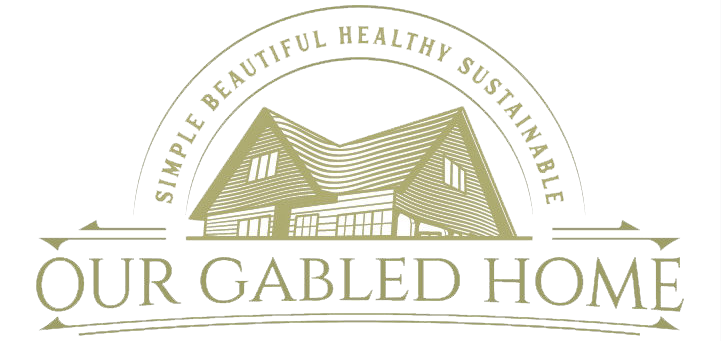

How do I get a softer crust on my sourdough bread
Add more steam and bake a bit longer at a lower temperature ~ Anja
Great article and thank you! I’m going to roll up my sleeves and try again!
Good for you! Happy baking ~ Anja
Thank you! I too have been put off by the critical purists online, I just want a sourdough starter that doesn’t fail me and a bread I can eat, I don’t need to win any awards. I have been feeding and feeding my starter and hoping it will be perfect but has never measured up to the photos online, so I have been scared of failure and have never even made a loaf. Seriously, I have been feeding this starter off and on for 2 years! Currently my starter is in the freezer but next week when I have time I will take it out and plough right in and made a loaf of bread. Thank you for giving me hope! Happy New Year.
Good for you!! I am sure your bread will be delicious! Happy baking ~ Anja
Oh I so totally understand how you feel. There has been way to much stress on the perfect loaf.
Right? Thank you for your comment ~ Anja
Finally! A voice of reason in the sourdough world!
I’ve been doing sourdough off and on for 16+ years, and the current group of “professionals” make me crazy! Your start does not have to be coddled. It is very resilient and forgiving. I’ve neglected it for months, but it always comes back.
I belonged to a sourdough FB group for awhile, but left because of the many SD “professionals” that are all-knowing, and spend their time judging instead of encouraging and helping the newbies.
I’ve even taught a few classes that focus on how sourdough does not have to take over your life. It really doesn’t.
I believe that your best success will come if you keep it simple, make things that you enjoy, and realize that if it tastes good, that is a win.
Sourdough is supposed to be fun! There is no reason to make it harder than it has to be.
Thank you for being a voice of reason in what is becoming a crazy world.
I am so happy to hear my post resonates with you and yes, I like my SD method to be uncomplicated
Dude! I started to read your article with great expectations of finding one more person, self named expert, making sourdough complicated when it actually it is easy when you relax. I have been doing sourdough for over 40 years and was getting really tired of the “experts” Congrats on a simple and straight forward myth busting article.
Haha, thank you so much, I am glad you enjoyed it ~ Anja
I too appreciate your common sense approach to bread! The big holes are way over rated. I’ve dabbled in sourdough for a few years but got serious in the spring so that my gluten intolerant husband can enjoy good bread again and with his encouragement I am now selling bread and cinnamon rolls at Farmer’s Market. But I make only sandwich loaves at this point because that’s real bread, in my opinion.
That sounds great! I am happy to hear your gluten intolerant husband can enjoy bread again!
Thank you Anja,
I grew up with homemade bread. I continued to bake bread when started my family. Sourdough intrigued me so after a failed attempt I finally got my starter going about 4 years ago. The learning curve surprised me but I took the mentality that pioneer women had only simple tools to work with and I can do this. The feeling one needs to make a loaf of bread perfect can be overwhelming.
Your article is so encouraging for beginners and needed. Mom’s yeast breads were always good not always perfect but most times were. Overall it was always on the table and fed a large family.
Again thanks for your knowledge and encouragement.
I am so glad you enjoyed this post! And yes, bread does not have to be perfect ~ Anja
Hi Anja, I’ve been practicing your method of no discard. But I’ve been taking 100g of the refrigerated starter & adding 100g of water & 100g of flour ….leaving it on the counter overnight & using it the next day for my bread. Instead of using the whole refrigerated starter I just take 100g of it. Then when it gets low I add more flour to it & keep it dry..
What do u think of my method?
Thanks, Joyce
It sounds like it’s been working for you so why change it, right? Anja
I think I’ve finally found my sourdough person! Oh my Goodness, so when I first learned to bake bread it was from my mom living out in rural America and her passing down when she learned from my grandparents generation over generation and she didn’t make it “this hard” like other bloggers do. Just like you she had a lot of the same philosophy on bread, how to alter it to work for you, see I like a sweeter bread that is more dense, we have some deep Dutch roots and it’s just the way it is for my family. Since my mom passed it’s been hard to remember everything she taught us on how to alter the taste and I’ve been struggling on it… I’m so thankful you have that info here. And like you we didn’t do the discard method either so Thank you for being a voice without pressure so some of us can learn a different way to utilize our Brot, so from deep in the Heart of Texas your voice is much appreciated, especially to help fill some of the gaps that my mom can’t anymore when I need a little advice on The bread front. She was a blogger also but for some reason that is one thing she did’t get to before she left this side of heaven. I have tons of her other advice and recipes loving saved but your blog helps with this and I thank you for it.
Yay! I am so glad to hear you like my sourdough methods and that you have all these great memories around your mom! Happy sourdoughing ~ Anja
I have baked bread for decades but not sourdough. I always wanted to, because I love the taste, so I finally did it. It went well. My grandson (11 yo) wanted to learn so I taught him. He wanted to do it the old fashioned way, no mixer. So I taught him to knead. As the texture of the dough changed, the look on his face changed as well. It was as if he saw the creation of the universe. It was marvellous. He is a convert for life.
That makes me so happy to hear! Teach them when they’re young and they’ll build life-long skills ~ Anja
The rye flour doesn’t seem to be working. Buttermilk and rye flour… Pancake like. Three days… Nothing.
It can take up to 10 days, especially if you have never made or had a SD starter before. Keep stirring it every day. Hope this helps ~ Anja
One of the “secrets” I found out, having a lot of experience with yeast baking but none with s/d is it takes a looong time to rise! Sometimes 3-4 hours instead of 45 min to an hour.
Yes! That is why most commercial bakeries prefer yeast over sourdough. However, I find sourdough well worth the effort in regards to taste and health benefits ~ Anja
Any idea why the links to your “easy sourdough bread” do not go through? Links to other articles do go through. Do I have to go through the class to get the recipe?
I am a total beginner andlLove your channel.
Hi Jean, there was a technical issue on my end that I just fixed. Thanks for letting me know! You can now find the recipe again (but here it is: https://ourgabledhome.com/easy-no-knead-sourdough-bread/). Happy baking ~ Anja
I really enjoyed reading this article. I am new to Sourdough and I was scared and discouraged to begin for years. Only because I found someone else like you! Who assured me that it’s ok to make mistakes. It’s ok to keep trying. You don’t have to feed daily. Thank you for the suggestion on “failed “ loaves. Love this article.
Yes, sourdough shouldn’t be hard but it should be fun ~ Anja
Totally agree with your comments about the big holes. I have been baking bread for almost 40 years, but sourdough not so much, and when I decided to get back into it all the discarding and the desire for big holes threw me for a loop for a while, because I definitely didn’t remember that being a “thing”. Your site was one of the two that brought sanity into my searching. It’s been a few months and a few loaves and I’m starting to feel like I’m back in the groove! Thank you for keeping things “real”… 😀
Aww … I am so glad to hear that! I don’t think holes are necessary for good-tasting bread ~ Anja
If anyone knows secrets about sourdough it would definitely be you! When I get into it, I know who to come to for all the best information and recipes!
Aww … thank you so much! That is very sweet of you to say ~ Anja
I love this approach of making sourdough bread a little simpler than the mainstream!
Nice! Sourdough does not have to be complicated ~ Anja
This is encouraging! I killed my first sourdough starter and have been scared to try it ever since. This gives me hope!
Nice! Hope you will give it another try!! You got this ~ Anja